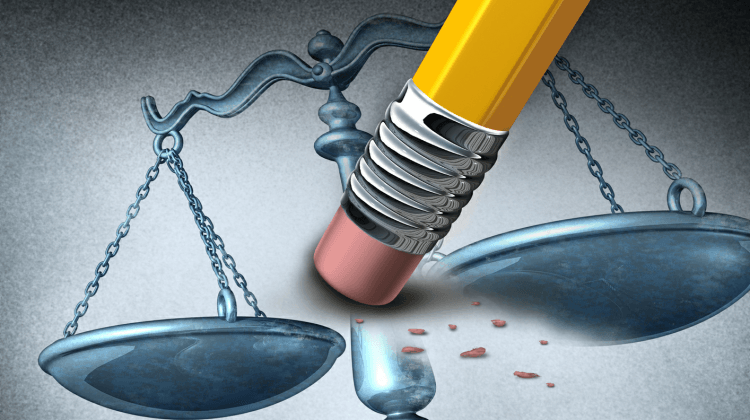
False Accusations
 “Believe the victim” mantra and the frequency of false allegations
“Believe the victim” mantra and the frequency of false allegationsCollege campus decision-makers are instructed to ensure “victims of sexual violence are believed and that they’re seen as credible,”[1] but to be “very, very cautious in accepting a man’s claim that he has been wrongly accused of abuse or violence.”[2] Policies that advise adjudicators to “believe the victim” are intended to minimize victim re-traumatization and encourage reporting of sexual offenses.[3]
According to the victims’ rights campaign Start by Believing, “[w]e should believe, as a matter of default, what an accuser says” because “the costs of wrongly disbelieving a survivor far outweigh the costs of calling someone a rapist.”[4] This message glibly minimizes the impact of false accusations, while conveniently ignoring the fact that false accusations can lead to erroneous findings of guilt:
The accused would have a rough period. He might be suspended from his job; friends might defriend him on Facebook… But false accusations are exceedingly rare, and errors can be undone by an investigation that clears the accused, especially if it is done quickly.[5]
The notion that false allegations are exceedingly rare is based on the often repeated estimate that “only 2% of reported rapes are false,” a ubiquitous claim based upon a virtual “house of cards,” and immortalized in feminist Susan Brownmiller’s 1976 book, Against Our Will.[6] Since its publication, every authority espousing the 2% claim has either relied on Brownmiller’s book for the claim, or relied on it indirectly by citing a source which relied on the book, or by citing yet a third source relying on the second source which relied on Brownmiller’s book, ad infinitum.[7]
As it turns out, scholarly detective work revealed that Brownmiller’s 2% claim was based on her own “interpretation of some data” referenced in a 1974 speech by a local New York judge, who based his comments on one New York City police department unit’s estimate[8] — hardly an adequate sample or statistically significant estimate. Most reputable studies have estimated the actual rate of false reports to be at least 9 percent and probably closer to 50 percent.[9]
The consequence of implementing believe the victim protocols is not only that the accuser is presumed to be truthful and his/her recollections accurate, but also that the accused student is no longer entitled to be presumed innocent.[10] Unfortunately for unjustly accused students, our political leaders continue to equivocate on the likelihood of false allegations:
In the rush to accomplish American social policy objectives, policy-makers and the public are wary to embrace the issue of false allegations of sexual assault, even discuss it. At the heart of the issue–despite the fact that false allegations concern primarily consequences for men–the female vote is crucially at stake on both sides of the political aisle and as a result disproportionately and incongruously shapes how the issue is publicly discussed.[11]
Notwithstanding the divergent estimates, it should be obvious that the prevalence of false criminal allegations is not necessarily analogous to allegations of sexual misconduct by college students; it is very likely that the prevalence of false allegations of sexual misconduct on campuses has risen in recent years, not only due to expanded definitions of sexual assault and the absence of cross examination and sworn testimony, but also because disincentives for making false allegations of sexual violence, such as shame and fear of repercussions, which precluded many false criminal allegations in the past, are no longer a significant factor on college campuses. That trauma, shame and fear, which historically deterred victims from reporting to law enforcement, has, on today’s campuses, been replaced by an almost exalted victim status, allowing accusers to be showered with attention, media recognition and even invited to the State of the Union Address.[12]





